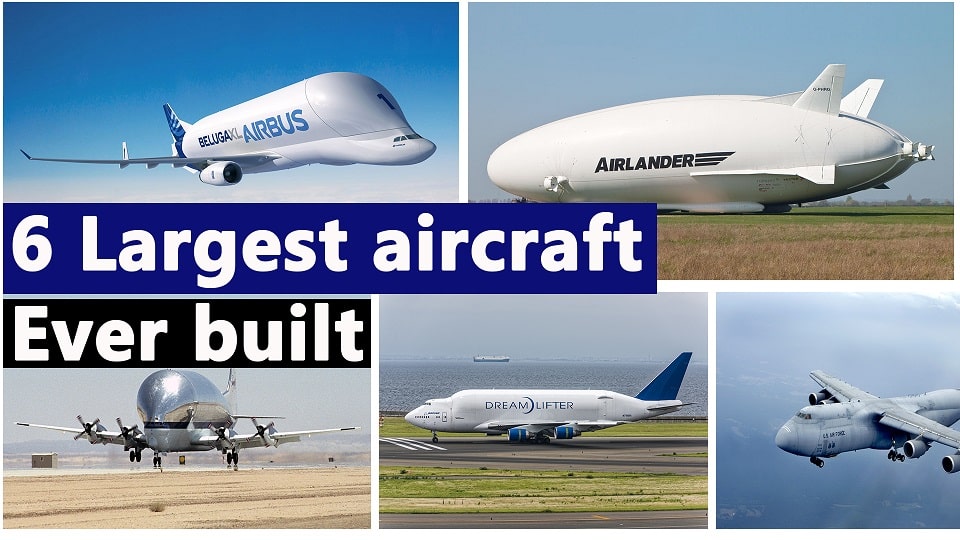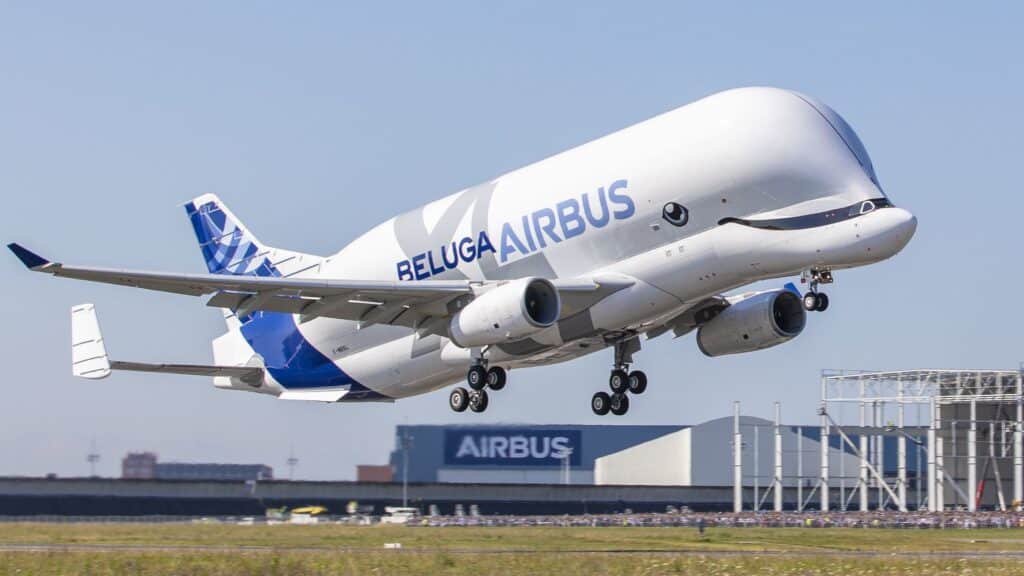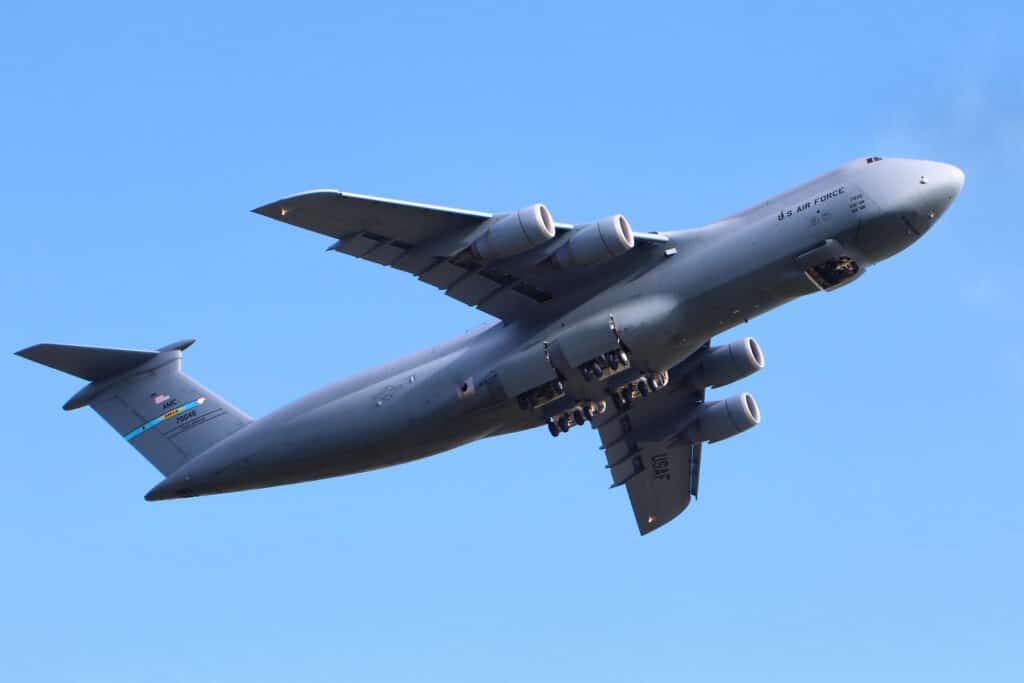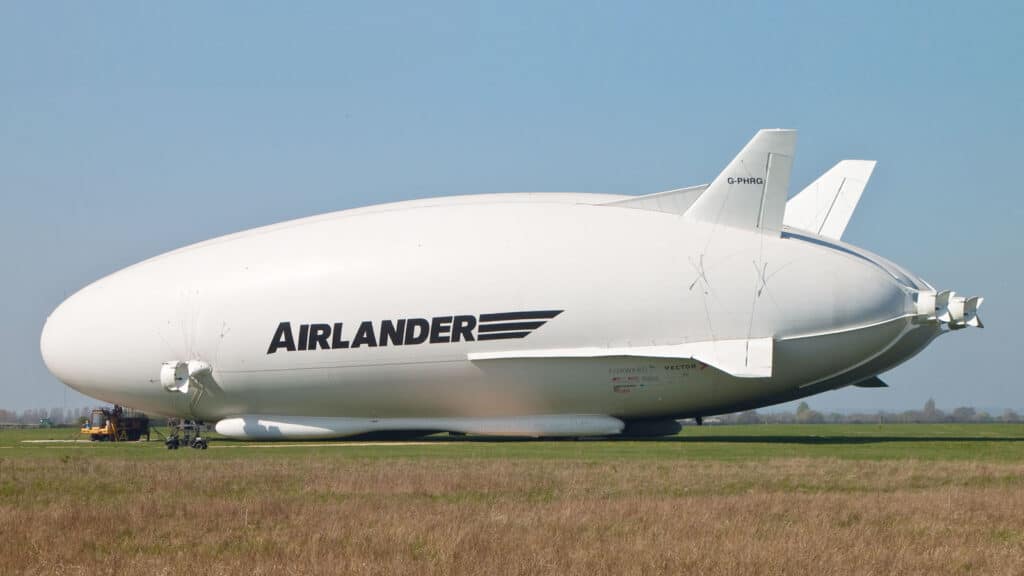Aviation
The six largest cargo aircraft ever built in the aviation industry
We have listed the six largest aircraft ever constructed for freight transportation. These aircraft were all built in surprisingly short timelines, and limited numbers and were kept in good condition.

We have listed the six largest aircraft ever constructed for freight transportation. These aircraft were all built in surprisingly short timelines, and limited numbers and were kept in good condition.
1. Antonov An -225 mriya
The largest cargo aircraft in the world at one time was the Mriya or Antonov An-225. During the most terrifying moments of the COVID-19 pandemic, it was regarded as an aviation wonder and looked to as a symbol of hope. However, on February 27, 2022, Russian forces were involved in a conflict with Ukraine and destroyed it. Mriya is a Ukrainian word that means “the dream.” Since it began operating in 1988. It will cost an estimated $3 billion to rebuild Mriya, according to Ukrainian aerospace and defense giant Ukroboronprom. The renovation, will be “time-consuming” and take more than five years.
With a 275-foot length, 288-foot breadth, and 59-foot height, the Antonov can accommodate six crew members. Additionally, it had six D-18T engines that were jointly constructed by Russia and Ukraine during the Soviet era. This aircraft can cruise at 850 km/hr.
Specifications
- Crew: 6
- MTOW: 640,000kg
- Maximum speed: 850km/h (460 kn)
- Power plant: 6 x progress D-18T turbofans
- Wingspan: 88 metres (288 ft)
- Length: 84 metres (275 ft)
- Height: 18.2 metres (59 ft)
- Cruise speed: 800 km/h
2. Lockheed C-5 galaxy
The Lockheed C-5 Galaxy is a large military transport aircraft designed and built by Lockheed, and now maintained and upgraded by its successor, Lockheed Martin in 1970. It provides the United States Air Force (USAF) with a heavy intercontinental-range strategic airlift capability and its maiden first flight in 1968. The current price of this aircraft is $167.7 million U.S. The C-5 is one of the biggest military aircraft in the world, and the C-5M Super Galaxy is an updated model with new engines and upgraded avionics that will extend its useful life until 2040 and beyond.
These four crew members are in charge of operating it. It is 247 feet in length, 222 feet in width, and 65 feet in height. Its maximum takeoff weight is 381 tonnes, and its maximum speed is 856 km/h. It is powered by four General Electric F138 turboprop engines, each of which is capable of producing 230 kN.
Specifications
- Crew: 7
- MTOW: 840,000 lb (381,018 kg)
- Maximum speed: 856 km/h (462 kn)
- Power plant: 4 × General Electric F138-100 turbofan engines, 51,000 lbf (230 kN) thrust each
- Wingspan: 67.89 m (222 ft)
- Length: 75.31 m (247 ft)
- Height: 19.84 m (65 ft)
- cruise speed: 830 km/h (450 kn)
3. Super guppy
A big, wide-bodied cargo plane called the Super Guppy is used to transport huge cargo components. Five were built in two variants, both of which were colloquially referred to as the “Super Guppy “and made its first flight in 1965.The Super Guppy is the only airplane in the world that has carried a complete S-IVB stage, the third stage of the Saturn V rocket. The Super Guppy performed this role several times during the Apollo program.
Super Guppy is a special aircraft with a length of 143 feet and a width of 48 feet that is operated by four crews. With a maximum takeoff weight of 77 tonnes and four Allison 501 turboprop engines, it had a total power output of 3,490 kW. and it is capable of 460 km/hr flight.
specifications
- Crew: 4
- MTOW: 170,000 lb (77,111 kg)
- Maximum speed: 460 km/h (250 kn)
- Power plant: 4 × Allison 501-D22C turboprop engines, 4,680 shp (3,490 kW) each
- Wingspan: 47.63 m (156 ft)
- Length: 43.84 m (143 ft)
- Height: 14.78 m (48 ft)
- Cruise speed: 410 km/h (220 kn)
4. Airlander 10
The hybrid airship known as Airlander 10 was created by the British company Hybrid Air Vehicles and known as the HAV 304. With four diesel engines driving ducted propellers, it flies utilizing both aerostatic and aerodynamic lift and is made out of a helium airship with auxiliary wings and a tail. For the Long Endurance Multi-intelligence Vehicle program of the US Army, the HAV 304 was first created. In 2012, it had its inaugural flight. Airlander 10 has a base price of $50 million, while models with full specs cost an additional $10 to $20 million.
The 302-foot-long and 85-foot-tall Airlander it is controlled by a single crew. in addition to having a maximum takeoff weight of 33.2 tonnes and a top speed of 148 km/h. It is driven by four 4-litre turbocharged diesel engines, each of which produces 242 kilowatts of power.
Specifications
- Crew: 1
- MTOW: 33,285 kg (73,381 lb)
- Maximum speed: 148 km/h (80 kn)
- Power plant: 4 × 4 litre V8 turbocharged diesel engines, 242 kW (325 hp) each
- Wingspan: 43.5 m (143 ft)
- Length: 92 m (302 ft)
- Height: 26 m (85 ft)
- Cruise speed: 148 km/h (80 kn)
5. Boeing 747 Dreamlifter
A wide-body cargo aircraft with significant modifications to the Boeing 747-400 airliner is called the Boeing 747-400 Large Cargo Freighter. The enormous aircraft, nicknamed as the Dream lifter, was created to fly medical supplies during the COVID-19 pandemic in addition to carrying parts for the Boeing 787 Dreamliner between Italy, Japan, and the United States. Its first flight was in 2006. An estimated cost of the Boeing 747 dream lifter is $ 232 million – $ 261 million U.S.

Image Courtesy : Airbus – The Airbus BelugaXL, built to transport large aircraft pieces, took off on its first flight Thursday from France’s Toulouse-Blagnac Airport
Its length is 235 feet, and its height is 70 feet. It has a maximum take-off weight of 364 tonnes, can be operated by two crew members and is propelled by four Pratt & Whitney turbofan engines, each of which is capable of producing 282 kilotons of torque.
Specifications
- Crew: 2
- MTOW: 364,235 kg (803,001 lb)
- Maximum speed: 878 km/h (474 kn)
- Power plant: 4 x PW 4062 turbofan (282 kN)
- Wingspan: 64.4 m (211 ft)
- Length: 71.68 m (235 ft)
- Height: 21.54 m (70 ft)
- Cruise speed: 878 km/h (474 kn)
6. Airbus Beluga XL
The Airbus BelugaXL is a large transport aircraft based on the Airbus A330-200F built by Airbus to replace the original, Airbus Beluga move oversized aircraft components, such as wings. The aircraft made its first flight on 19 July 2018. The BelugaXL entered service with Airbus on 9 January 2020. The program cost is €1 billion for development and production.
It measures 207 feet in length and 197 feet in width. It can be handled by two crew members, has a maximum take-off weight of roughly 227 tonnes, and can cruise at a speed of 737 kilometers per hour. It is propelled by two Rolls-Royce engines, each producing 316 Kilonewtons of thrust.
Specifications:
- Crew: 2
- MTOW: 227,000 kg (500,449 lb)
- Maximum speed: Mach 0.7
- Power plant: 2 × Rolls-Royce Trent 700 turbofan, 316 kN (71,000 lbf) thrust each
- Wingspan: 60.3 m (197 ft)
- Length: 63.1m (207 ft)
- Height: 18.9 m (62 ft)
- Cruise speed: 737 km/h (398 Kn)

Aviation
Boeing, Antonov to Collaborate on Defense Projects

– MOU represents Boeing’s commitment to work with Ukrainian industry
– Includes exploring opportunities for collaborating on in-country support of Unmanned Aerial Systems
A Memorandum of Understanding was signed today by Boeing and Antonov Company to investigate potential collaboration on defense-related projects.
“We’re happy to keep collaborating with the Antonov Company to help Ukraine’s economic development and expansion,” stated Ted Colbert, CEO and president of Boeing Defence, Space, & Security.
Airbus and the Antonov An-225: The Best Partnership:Click here
“This agreement demonstrates our ongoing efforts to find more opportunities to work with Ukrainian industry, which was underscored by our signing of the Ukrainian Defence Industry Compact earlier this year.”
The areas of potential collaboration identified in the agreement consist of training, logistical support and overhaul services for tactical Unmanned Aerial Systems utilized by the Ukrainian Armed Forces, which includes the ScanEagle. In addition, the companies will also explore opportunities for Antonov to provide engineering support to Boeing.
The six largest cargo aircraft ever built in the aviation industry:Click here
“A strong, innovative, and efficient defense industry is key to sustainable economic development and national security, and we are extremely excited to collaborate with Boeing,” said Ievhen Gavrylov, CEO of Antonov Company.
This agreement brings a whole new level of opportunity to implement the latest and most effective solutions – in addition to the possibility of future projects with Boeing in the aerospace and defense industry.”
-

 Travel1 week ago
Travel1 week agoAir India to Expand US Operations with Three New Routes After a Decade
-

 Travel2 weeks ago
Travel2 weeks agoWhy We Should Avoid These Stamps in a Passport
-

 Airlines1 month ago
Airlines1 month agoInvestigations Reveal Fake Chinese Titanium in Boeing and Airbus Jets
-

 Tech4 weeks ago
Tech4 weeks agoChina’s CATL Plans 1,800-Mile Electric Plane Launch by 2027
-

 Airport3 days ago
Airport3 days agoTop 10 Largest Airports in the World by Size
-

 Aerospace4 weeks ago
Aerospace4 weeks agoChina’s Fighter Jets Turn Wings into Autonomous Drones
-

 Airlines4 days ago
Airlines4 days agoAir India Rolls Out A350s for Delhi-New York JFK and Newark Routes
-

 Defence3 weeks ago
Defence3 weeks agoBoeing Enhances Chinook with New Engines and Block II Upgrades at $96 Million











